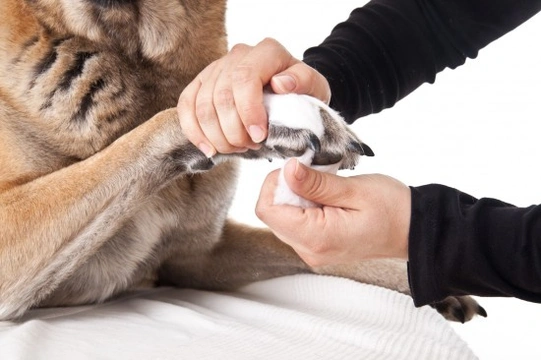
Top ten paw care tips for dogs
As the weather starts to get colder, the surfaces that our dogs walk on also begin to chance, becoming colder, wetter and sometimes harder and more compact. Every dog owner should take special care of their dog’s paws at all times of the year, but when winter approaches, this is especially important, as dogs are more prone to sores, cracks and damage during the harsher weather.
If you want to make sure that you are doing everything possible to take care of your dog’s paws and prevent damage to them, particularly in the colder months, read on for our top ten paw care tips for pampered pooches!
Check your dog’s feet regularly
Check your dog’s feet over regularly, especially when you come back from a walk. You should be on the lookout for overly long nails, dry skin, any sores or cuts, and any cracks that might indicate that your dog’s feet need a little bit of extra attention.
Clean in between the toes
The areas in between your dog’s toes can soon pick up foreign bodies such as grass seeds, grit and dirt, which can become lodged there are cause irritations or chafe at the skin. When grooming your dog, or if they have been walking over particularly loose surfaces, check the areas between their toes carefully for anything that might have got lodged there, or any sores or sensitive areas. Clean out the area between your dog’s toes with a light soap solution, rinse it thoroughly and ensure that it is dried properly.
Trim the nails
If you can hear your dog’s nails clicking along the ground every time that they take a step, their nails are too long! While dogs that walk on hard surfaces a lot naturally wear their nails down to an appropriate length, dogs that do not walk as much or that spend most of their time on soft surfaces might need a little extra help. You may wish to trim your dog’s own nails at home, but you can also book an appointment to have this done for you by a dog groomer or veterinary nurse. It is important not to trim the nails too far down, as they are served by rich blood vessels and nerve endings, so always have a professional show you how to clip your dog’s claws if you wish to do it at home in the future.
Snip off long hair
If your dog has very thick or long hair between their toes or around their legs, it can be a good idea to trim this down a little. While you should not go overboard, and dogs need their leg hair to help to provide them with protection against the elements, too much hair can also hold ice or snow in clumps, making your dog colder than they need to be.
Moisturiser and protection
If your dog spends a lot of time walking on rough or hard surfaces, the pads of the paws can become sensitive and worn down, which can lead to soreness. You can buy a product called paw wax to apply to the pads of the paws to provide protection against this, and you might even want to consider using a non-toxic moisturising cream on the pads of your dog’s paws now and then too, to keep them supple and prevent cracking!
Paw massage!
It might not have occurred to you before, but massaging your dog’s feet can help to improve blood flow and circulation to the paws, and help to keep them supple and protected against the elements. Your dog might wonder what you are doing at first, but lightly massaging the paws for a few minutes at a time now and then can prove greatly beneficial to your dog!
Take it easy on hard surfaces
When the temperatures approach freezing, the earth becomes compacted and harder to walk on, and can create more of an impact on your dog’s bones and joints. Be careful not to push your dog too hard when walking on hard surfaces, and avoid high-impact exercise when the ground is frozen solid.
Avoid toxic substances on the ground
De-icer and gritting products for the roads all contain toxic substances that can prove harmful to your dog, and can also cause irritation and sensitivities to the paws. Try not to walk your dog over surfaces that might have been treated with de-icer compounds, and when you get back from your walks, wash their feet off in warm water to remove any traces and avoid your dog later licking their paws and ingesting toxins.
Booties to protect from the cold
Some dog’s paws are much more sensitive to the cold than others; this is particularly the case for fine, lightweight dogs such as Greyhounds, and tiny toy dogs like the Chihuahua. If the ground is so cold as to be uncomfortable for them or make walking unpleasant, you can protect their paws from the worst effects of the cold and wet by buying a set of warm, waterproof dog booties for them for the winter months! These will take a little bit of getting used to, but can really help your dog out in the long term.
Dangers under the surface of the ground
When there is snow on the ground or even thick frost or ice, beware of hidden dangers lurking just under the surface. If neither you nor your dog can see the surface that they are walking on, they are much more likely to inadvertently step on something sharp, like a stick or broken glass. Take care of where you walk your dog in order to minimise the risks involved, and check your garden over before the weather gets very cold to ensure that there are no hazards that will later become hidden under the surface of the inevitable snow.



